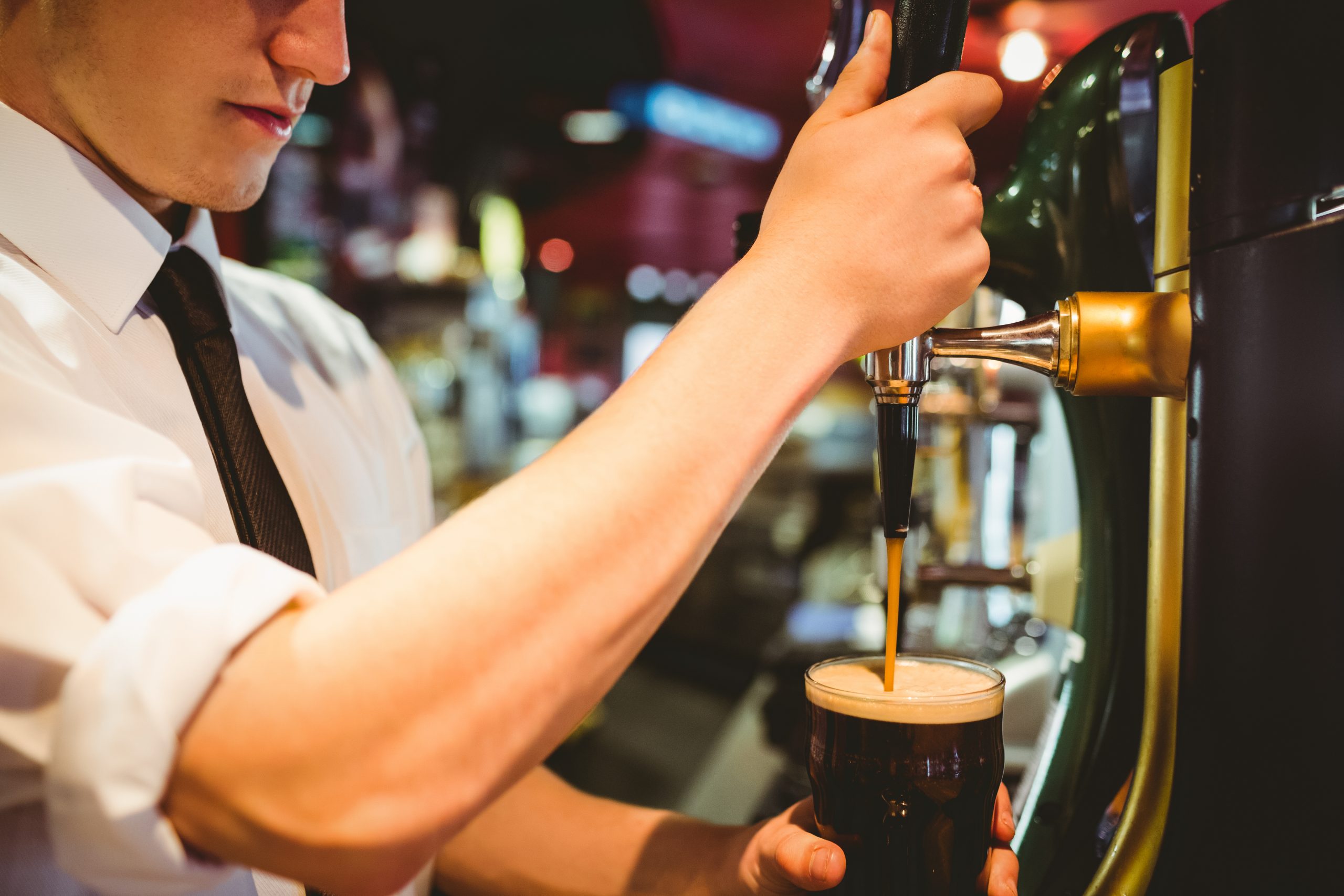


You want to give your customers great tasting, refreshing beer. You want it to look good, taste good, and be an overall quality drinking experience. You don’t want a customer to send a beer back, or worse, struggle through it because they don’t have the guts to tell you it’s not right. When it comes to beer, there are a number of points where quality can be compromised. It’s your job to make sure it makes it to the customer in pristine condition.
In order to protect a beer’s quality, it’s important to know where trouble can arise. To keep beer in tip top shape, pay careful attention to these four points in its journey: 1) draft lines, 2) temperature, 3) glassware, and 4) pouring.
You want to serve a perfect beer – not one that’s cloudy, moldy, or tastes funny. And you definitely don’t want to make a customer sick. Over time, beer lines can get clogged with yeast, bacteria, mold, and beer stones. Watch out, all of these components will negatively affect the taste.
Yeast found in draft lines may be leftover from the brewing process, or it could be wild yeast found in the environment. It’s usually white or grey and found on the surfaces of the beer system that are exposed to air like faucets, drains, and keg couplers.
Bacteria, although not significantly risky to human health, can affect the appearance, aroma, and taste. If bacteria is present, the beer will have an unappealing cloudy look and an “off taste.” Beer spoiled by bacteria is supposed to taste sour or like vinegar, and it may smell like rotten eggs.
Mold can get into the beer system if it’s exposed to air. Usually found as surface growth in areas exposed to air, mold grows on beer system pieces like keg couplers, drains, and faucets. It’s usually black or brown.
Beer stone is a mysterious calcium buildup made of raw materials, water, and grain. As it develops, it eventually flakes off inside the beer tubing if the system is not properly maintained. A large amount of beer stone can negatively affect taste. Beer stone is usually grey or brown.
The majority of establishments hire an outside company like Lenox Martell to flush out the lines with specialized equipment and cleaning solution. It’s recommended that you get your draft lines cleaned after every keg or a least every two weeks. There are also specific state guidelines and brewery recommendations you should follow. You should also get your draft lines replaced anywhere from every year to every five years.
Experts believe that most beers have an ideal serving temperature. Usually, the optimal serving temperature relates to its strength. As beers become more alcoholic, they are usually served warmer because they are generally sipped more slowly and appreciated for their intricate flavors. Beers with a lower alcohol content are usually more for refreshment so they are kept at colder temperatures.
Although some craft beer bars have the ability to hold their kegs at different temperatures, the majority of bars control keg temperature with one central system. It is suggested that bars store kegs below 40°F (ideally at 38°F). If beer is stored above 40°F, its spoiling factors increase which can result in oxidative flavors. The beer will also foam, releasing carbon dioxide bubbles that can affect the taste and appearance of beer and take up 25% of your beer keg, essentially wasting ¼ of your supply.
Not only should you concentrate on the keg temperature, but you should also pay attention to the serving temperature. To ensure beer remains the same temperature from keg to glass, make sure your beer lines are insulated. Also, depending on the brew, decide whether to pour it into a room temperature or chilled glass. But never use a frosted glass, because it makes it difficult to smell and taste it, and it also creates unwanted foaming.
Grabbing a glass to pour a draft beer into shouldn’t be a mindless activity. In addition to the glass’s temperature, you should also be thinking about the glass’s shape and cleanliness. These steps are vital for serving a quality beer from keg to glass.
Glassware can make a big difference. When it comes to a quality drinking experience, presentation is key because it’s the first thing the customer sees. If beer looks pleasing to the eye, customers are already on their way to a positive experience. The shape of the beer glass can also affect the formation and retention of head. A healthy head of foam helps to retain volatiles including compounds of hop oils, spices, and fermentation byproducts. These are important for a beer’s aroma, which makes up a huge percentage of what people taste.
If beer glasses aren’t rinsed or washed properly, residue will form on the inside. When this happens, bubbles stick to the sides of the glass and head creation and flavors may be inhibited. The savvy beer drinker knows this is the sign of a glass dirty with grease, food particles, soap, or sanitizer. Even if they don’t recognize the mistake, dirty glasses are unacceptable. The only thing that should be in a customer’s glass is quality beer.
When you serve bottled or canned beers, you should also provide your customers with the proper glass. Unless customers are planning on chugging it, they’ll appreciate your dedication to craft beer and the drinking experience.
Pouring the perfect pint is the last step in a beer’s journey. Much like choosing the right glass, correctly pouring a beer is essential for providing the customer with a quality product. To pour a beer, hold the glass at a 45° angle and pour the beer and aim towards the middle of the slope of the glass. When the glass is about ⅔ of the way full, hold the glass at a 90° angle (upright) and keep pouring towards the middle of the glass in order to create the perfect foam head of about 1 to 1 ½ inches. At this point, it might also help to slowly add some distance from the the glass as you pour to create more of a foamy head.
If you pay careful attention to each step in a beer’s journey, you’ll ensure your customer gets a great beer every time. For more information on serving a quality beer, check out our interactive Beer Glassware Guide below.

